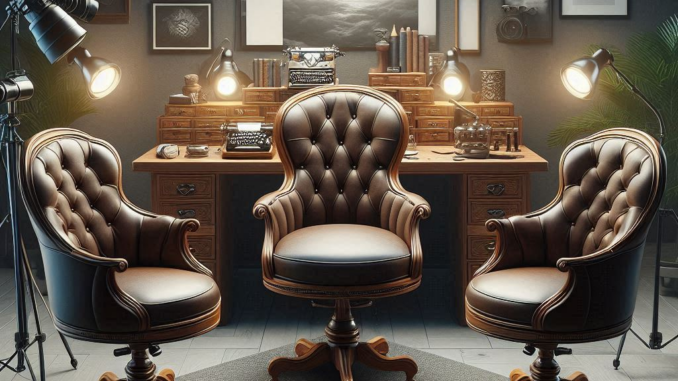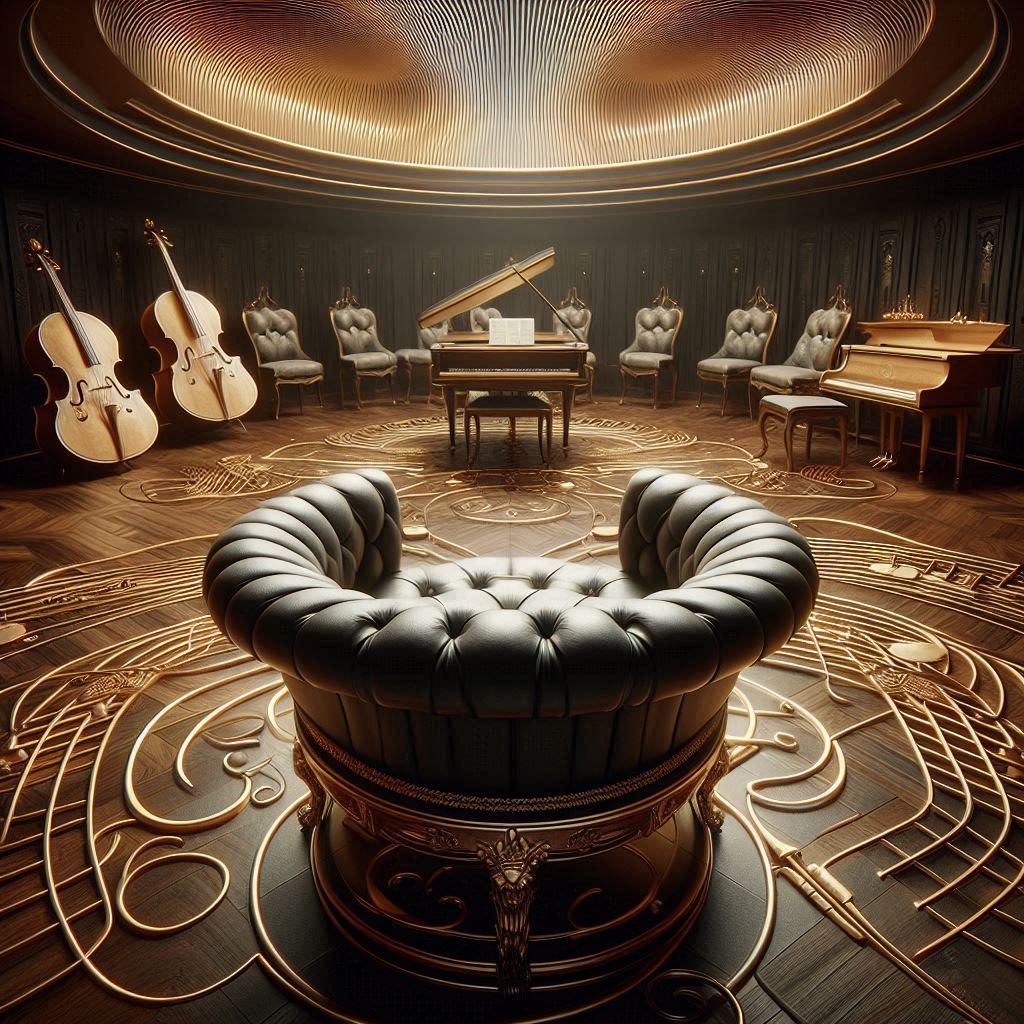
What is the Old Name for a Chair?
Introduction
Have you ever sat down in your favorite chair and wondered what people called it hundreds of years ago? Chairs are such a big part of our everyday lives that we rarely stop to think about their history. But the story of chairs and what we’ve called them over time is pretty amazing! In this post, we’re going to explore the old names for chairs, where these names came from, and what they meant to people long ago. Whether you’re a history fan or just like learning new things, you’re in for a treat as we dive into the world of ancient chair names!
Quick Answer
The old name for a chair varied depending on the time period and culture, but some common historical terms include cathedra, chaiere, throne, and stool.
The Fascinating World of Ancient Chair Names

Cathedra: The Seat of Authority
Let’s start with a really old name: cathedra. This word comes from Latin, and it basically means “seat.” But it wasn’t just any old seat – a cathedra was special. It was often used to talk about a bishop’s throne, which was a big deal in churches. The cathedra wasn’t just a place to sit; it was a symbol of the bishop’s power to teach and lead.
Interestingly, we still use a word that comes from cathedra today. Can you guess what it is? It’s “cathedral”! A cathedral is the main church in an area where a bishop leads, and it’s called that because it houses the bishop’s special seat or cathedra.
Chaiere: The French Connection
Next up, we have chaiere. This word comes from Old French, which is like a great-grandparent of the French language people speak today. Chaiere is actually where we get our modern word “chair” from. Back in the day, people used chaiere to talk about any kind of seat or throne. It shows how important chairs were in medieval times – they weren’t just for sitting, they were a big deal!
Throne: A Seat Fit for a King
You’ve probably heard of a throne before. This word has been used by lots of different cultures to talk about a special chair for royalty or very important people. Thrones were often super fancy, with gold, jewels, and beautiful designs. They weren’t just chairs; they were like symbols of power and authority.
Imagine being a king or queen and sitting on a throne. How would that make you feel? Pretty important, right? That’s exactly what thrones were meant to do – show everyone how powerful the person sitting in it was.
Stool: The Simple Seat
Before chairs with backs became popular, people often used stools. A stool is a simple seat without a back. It might not sound very comfy to us now, but stools were great because they were easy to move around and you could use them for lots of different things.
Think about the stools we use today – at a kitchen counter or in a workshop. They’re still pretty handy, aren’t they? That’s why people liked them so much in the old days too.
How Chair Names Changed Over Time
The way we talk about chairs has changed a lot over the years. Let’s take a look at how these names evolved:
| Old Name | Where It Came From | What It Meant | How We Use It Now |
|---|---|---|---|
| Cathedra | Latin | Seat, bishop’s throne | We don’t use it much, but it’s where “cathedral” comes from |
| Chaiere | Old French | Chair, seat, throne | It turned into our word “chair” |
| Throne | Many different languages | A fancy chair for important people | We still use “throne” to talk about royal seats |
| Stool | Old English | A simple seat without a back | We still use “stool” for backless seats |
A Personal Story: My Run-In with an Ancient Chair
I want to share a cool thing that happened to me recently. I was walking around this cute little antique shop in my town, just looking at all the old stuff. Suddenly, I saw this wooden chair that looked really old and had all these cool designs carved into it.
I was super curious, so I asked the shop owner about it. She told me it was a copy of a medieval cathedra. Can you believe it? A real-life version of one of the old chair names we’ve been talking about! She explained that it was the kind of chair a bishop would have sat in hundreds of years ago.
Seeing that chair made me really excited to learn more about the history of chairs and what people used to call them. It’s pretty amazing how something as simple as a chair can have such a cool story behind it!
Why Old Chair Names Matter
You might be thinking, “Why should I care about what people called chairs a long time ago?” Well, there are a few good reasons:
- It helps us understand history better
- We can see how language changes over time
- It shows us how important chairs were (and still are) in different cultures
- It’s just plain interesting!
Fun Facts About Old Chairs
Here are some cool things you might not know about chairs from long ago:
- In ancient Egypt, only the pharaohs and very rich people had chairs. Everyone else sat on the ground or on stools.
- The word “chairman” comes from the idea of the person in charge sitting in a special chair.
- Some Native American cultures didn’t use chairs at all. They preferred sitting on the ground or on mats.
- In medieval Europe, the height of your chair often showed how important you were. The most important person got the tallest chair!
How Chairs Changed the World
Believe it or not, chairs have played a big role in shaping our world. Here’s how:
- Social status: The type of chair you sat in showed how important you were in society.
- Work and productivity: Chairs allowed people to sit comfortably for long periods, which changed how we work.
- Health: The design of chairs has affected our posture and health over time.
- Culture: Different types of chairs reflect different cultural values and ways of life.
The Poetry of Chairs
Believe it or not, chairs have even inspired poetry! Here’s a short poem about chairs that captures their importance:
Thrones for kings and stools for all, Cathedra's power in bishop's hall. From chaiere to chair, a journey long, Each seat a story, each name a song.
Chairs in Different Cultures
It’s fascinating to see how different cultures around the world have thought about chairs:
- Japan: Traditionally used low seats or sat on the floor, reflecting a culture of humility and connection to the earth.
- Africa: Many cultures have special stools for chiefs or important ceremonies, often beautifully carved.
- India: The concept of a “seat of honor” is important, often a decorative cushion rather than a chair.
- Middle East: Historically used low seating and cushions, emphasizing hospitality and comfort.
The Future of Chairs
As we look to the future, it’s fun to think about how chairs might change:
- Smart chairs that adjust to your body automatically
- Chairs made from new, eco-friendly materials
- Chairs that can change shape for different uses
- Virtual reality “chairs” that make you feel like you’re sitting anywhere in the world
Conclusion: The Timeless Story of Chairs
From the grand cathedra to the humble stool, chairs have a rich history that tells us a lot about how people lived, worked, and thought in different times. The old names for chairs – cathedra, chaiere, throne, and stool – each tell a part of this story. They show us how language changes, how society values different things, and how even everyday objects can have deep meanings.
Next time you sit down in a chair, take a moment to think about its long history. Maybe it’s a descendant of a medieval throne, or perhaps it’s more like an ancient stool. Either way, you’re taking part in a tradition that goes back thousands of years!
What’s Next?
If you’re excited about the history of chairs, why not dive deeper? Here are some ideas:
- Visit a local museum to see old chairs in person
- Look up pictures of famous thrones from history
- Try sitting on different types of chairs and see how they feel
- Share what you’ve learned with friends and family – maybe they’ll see chairs in a new way too!
Remember, every chair has a story. What will your chair’s story be?


Leave a Reply